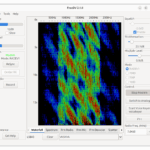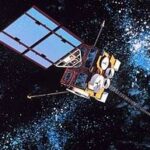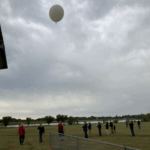By Chip Coker KD4C
There are several ways that you can participate in the September RWK Balloon Launch. If you want to participate as a mobile receiver and chaser (monitoring and chasing the balloon after it has launched), here’s what you will need:
- Mobile Setup with VHF Mobile Radio (and bonus points if your radio has and is configured to report your location via APRS). You will need a simplex frequency programmed into the radio (VFO is OK) so you can monitor the chase frequency.
- SDR and PC to receive and decode the balloon telemetry. You can use a laptop with an attached SDR (SDRplay, Nooelec, or RTL-SDR in order of preference) with the SDR audio ported into the Horus-Binary decoder software. The SDR should be connected to a mobile/outside antenna. You should have your phone configured as a mobile hotspot so that packets that you receive are sent to the tracker site (amateur.sondehub.org). We have full instructions on how to build this receiver here. If you don’t have an SDR, you can use one of the Quansheng HTs (operating in SSB mode) to receive the audio and let the laptop pick it up with the microphone (it works! but you have to be in a quiet environment)
- RadioSonde Tracker. We will also have “stock” radiosonde on the balloon at 404.7MHz. You should also have a separate radiosonde tracker (instruction to obtain/configure the radiosonde tracker are here). This tracker will also need a mobile antenna such is this one, which should be placed far enough away from your VHF mobile antenna that you won’t “fry” the receiver. This tracker should also be joined to your phone hotspot to report the packets to amateur.sondehub.com. In the spirit of belt-and-suspenders, we need two independent trackers in case one fails or otherwise is unreliable.
- Accurate Map/Driving solution. If you are going to chase, you will need real-time access to google maps or Waze. This can be your phone, but a bigger screen is your friend.
We suggest that you receive/chase in teams, for several reasons. #1 – the workload is much easier if you have one person driving and 1-2 others viewing the tracking and making sure that the receiving systems are operating and reporting properly. #2 – Traffic problems are a thing and we don’t need 10 different cars trying to go up one lane rural roads.
If you plan on assisting with the actual physical recovery, you need to wear shoes that you don’t care about, long pants with tight legs, and gloves and you will need bug spray and sunscreen. Be prepared to possibly climb fences and walk hundreds of yards. Bonus points for drone video.






